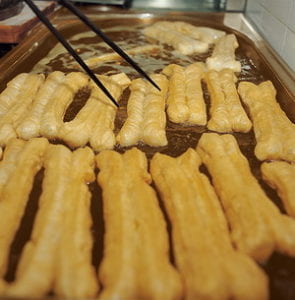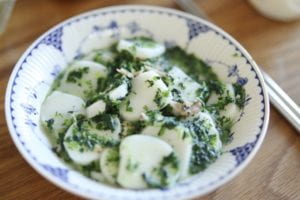Swislocki Mark defined the term “culinary nostalgia” as the “recollection or purposive evocation of another time and place through food”, which’s a time-honored Chinese tradition. It’s intriguing to read his discussion about food as local knowledge. After quoting Duara’s idea about “the local”, Swislocki then analyzed the essay “Selling Candy” written by Zhou Zuoren, in which he illuminated how food operated as a subject of chronotopic discourse (pp. 18) First, Swislocki pointed out that the candy can help people conjure a sense of place and remind them of those days in the hometown. Secondly, Zhou made Shaoxing Food culture (represented by the candy) into a “chronotope that transcended the problems of the day” (pp. 19) as he lived in turbulent times of China.
As a loyal reader of Zhou Zuoren’s works, I would like to add some views on this issue. Zhou really likes to write short essays about food (at least dozens of his articles mentioned food), themes of which are closely related to the hometown, nostalgia, local characteristics, and changes in Chinese society under the influence of the West at that time. In my opinion, rather than saying that Zhou sought to carve out a cultural realm that transcended the secular world by writing on food, it is better to say that he was practicing a “culinary nostalgia” on the dual level of time and space in a more profound way. His writing about food culture can show the individuals’ memories of the past and the cuisine of their hometown, at the same time, also show a collective recollection of traditional Chinese culture and social conditions of that generation. For one thing, like the essay “Selling Candy”, Zhou described many of the delicacies he ate in his hometown – Shaoxing. In the essay “Fried Ghosts” (You Zha Gui, a snack similar to fried dough sticks), he recalled the process of making fried ghosts and compared the differences of such fired snacks in various places of China; In “Wild Vegetables in My Hometown”, he mentioned that Shaoxing people often pick wild vegetables in spring to stir-fry them with rice cakes or make pastries. As a native of Ningbo (Ningbo and Shaoxing are both in Zhejiang Province and very close), I can easily resonate when reading his essay, and miss the local dishes and my home. For another, in the era of social transformation, Zhou’s description of the old-style exquisite food shows a nostalgia that travels through time and space, also a recollection of the culinary traditions that have passed away. In the “Dim Sum of the North and South”, he discussed in detail the old-style dim sum in the north China and the south China, both of which have a wide range of varieties, are exquisitely made, and follow strict making standards. He even criticized the popular tea food at that time for being nondescript, not learning foreign snacks successfully, also losing the original exquisiteness. Such ideas reflect a reminiscence of old traditions and a certain kind of nostalgia for the stable life in the previous history.


Stir-fried Rice Cake with Wild Vegetables
Read more about “Fried Ghosts”
Leave a Reply